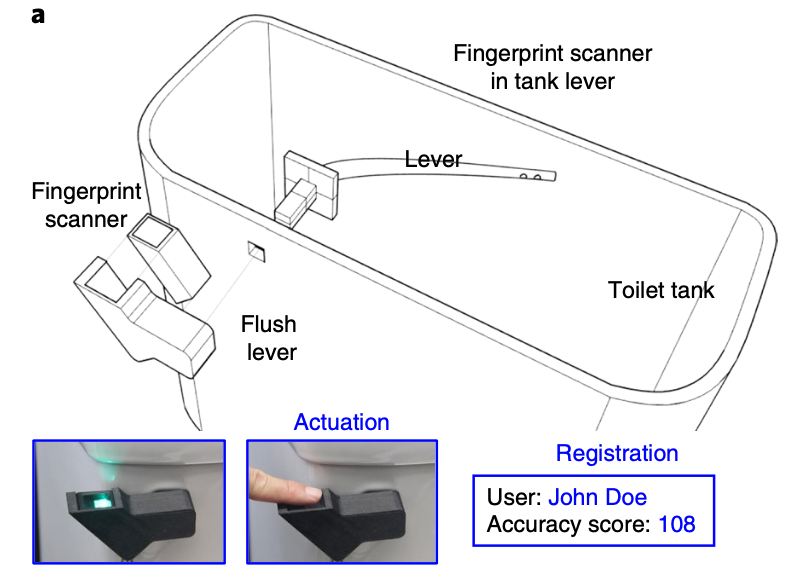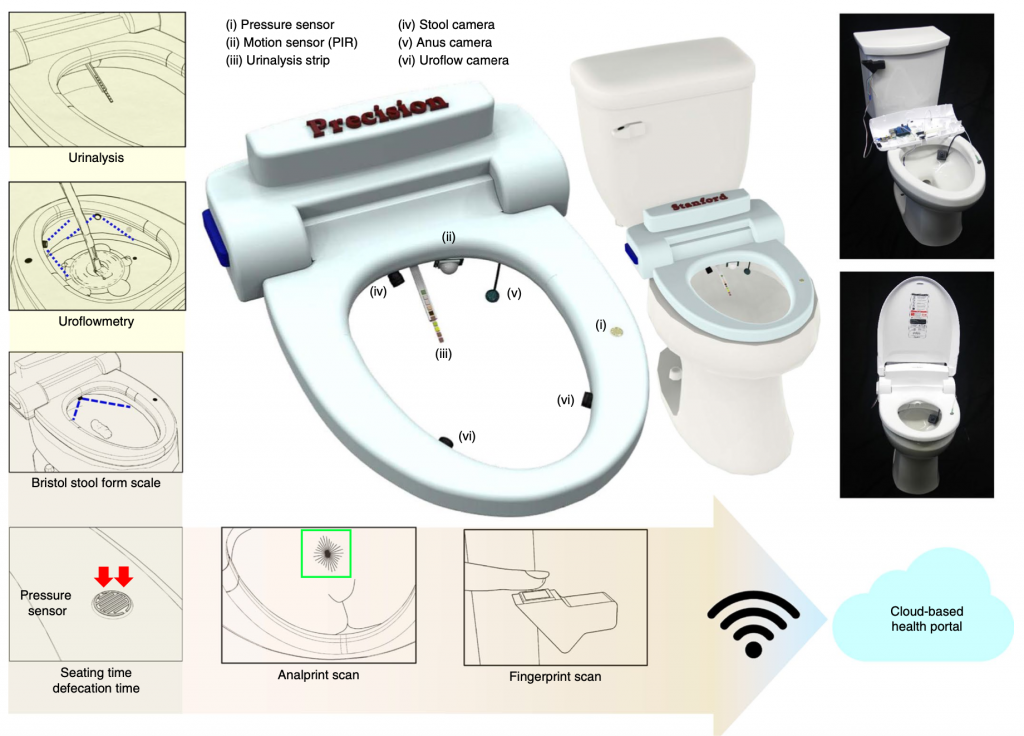When you think of the future, you think of smart cars and robots, whereas, ‘smart’ toilets are probably the last thing to enter your mind. Well, researchers at Stanford university seem to have designed just that, a ‘smart toilet’ that can analyze your stool and urine for early signs of cancer and other diseases.
Dropping off a stool sample at the lab or going in for a urine sample can be quite an embarrassing task for an individual. With the smart toilet researchers aim to bring a little relief to patients. According to a study recently published in the journal Nature Biomedical Engineering, the toilet will have the capability to carry out urinalysis, uroflowmetry, defecation monitoring, and biometric identification.

Source: Sanjiv S. Gambhir/Nature Biomedical Engineering
Identifying users via their anal print
A Two-factor user identification system is employed to create a user profile. You would think a fingerprint scanner in the flush lever would be enough to identify a toilet user but, the researchers took this one step further and also installed a camera to analyze a person’s anal creases. Which, quite literally, scans for their anal print. A cloud-based health portal is then used for the safekeeping of the user’s data. Rest assured, although the images are used to identify an individual, they are not uploaded to the cloud or shared with their doctor.
We know it seems weird, but as it turns out, your anal print is unique
Professor Sanjiv Gambhir
51% of patients with colorectal cancers experience altered bowel movements
By analyzing s patient’s stool sample for shape, color, blood and fat content, you can help diagnose many gastrointestinal diseases such as malabsorption disorders, inflammatory bowel diseases, and colorectal cancers. Rectal bleeding and change in bowel habits are some of the earliest signs of colorectal cancers. An early diagnosis can increase a patient’s chance of survival.

Source: Sanjiv S. Gambhir/Nature Biomedical Engineering
By using pressure and motion sensors, computer vision as uroflowmeters and urinalysis strips, researchers hope to analyze the biochemical composition of a user’s urine and help diagnose benign prostatic hyperplasia, urinary tract infections, and urologic cancers.
Not so ‘smart’ toilet
There seem to be quite a few limitations to the smart toilet system. The unsterile environment of a toilet will require the integration of self-cleaning mechanisms, to avoid false positives in biochemical assays deployed in the toilet system.
The current toilet system has only been tested for standing male participants so far. Changes will have to be made to the design of the smart toilet system so as to account for the differences in the female and male urinary systems and make it more accessible for all genders.
Although the current toilet system cannot be considered a screening or diagnostic tool, it will function as a daily monitor of human waste, collecting data on the user’s health. The collected data will not only act as an early warning signal for serious diseases but also as a guide for the treatment and management of various illnesses.
References:
Park, S., Won, D.D., Lee, B.J. et al. A mountable toilet system for personalized health monitoring via the analysis of excreta. Nat Biomed Eng (2020).
Majumdar SR, Fletcher RH, Evans AT. How does colorectal cancer present? Symptoms, duration, and clues to location. Am J Gastroenterol. (1999)




